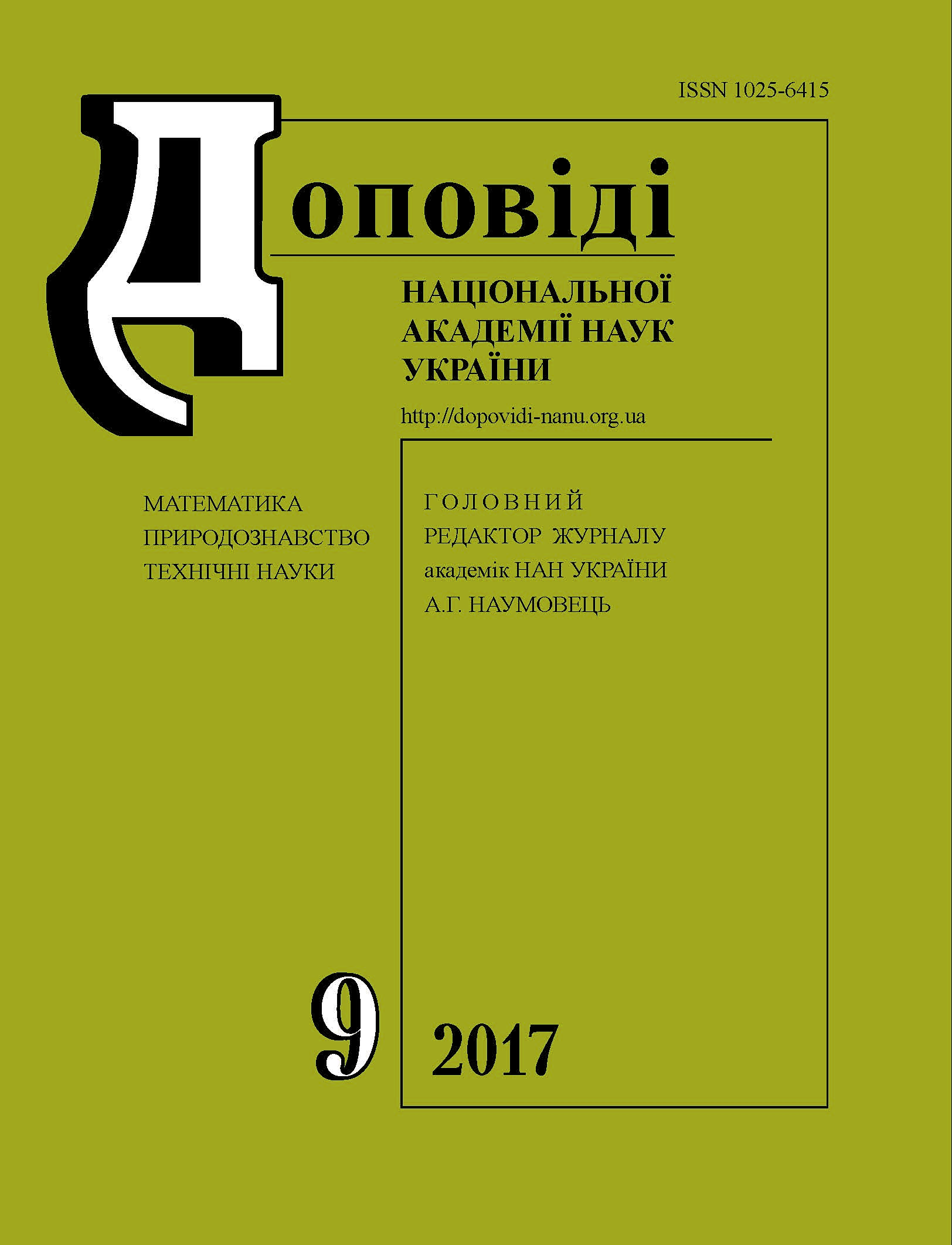Квантово-хімічне дослідження утворення комплексів похідних флавонолу з катіонами цинку і заліза
DOI:
https://doi.org/10.15407/dopovidi2017.09.095Ключові слова:
вільна енергія Гіббса, катіони металів, комплексоутворення, похідні флавонолівАнотація
З використанням квантово-хімічних методів ab initio (6-31G(d,p) DFT (B3LYP/6-31G(d,p)) і сольватаційної моделі IEF PCM (GAMESS) вивчено утворення комплексів катіонів Zn2+ і Fe3+ з 3-гідрокси-флавоном і трьома його похідними — (4′-(N,N-диметиламіно)флавонол, 4′-[N,N-ди(2-гідроксіетиламіно)]флавонол, 3’,4’-ди(гідроксикарбонілметокси)флавонол. Показано, що 3-гідроксигрупа молекул флавонолів у депротонованій формі є основним центром зв’язування катіонів і заліза, і цинку; у випадку 3′,4′-ди(гідроксикарбонілметокси)флавонолу в утворенні комплексів з Zn2+ також беруть участь бічні групи фенільного фрагмента. Для обох реакцій комплексоутворення (з катіонами Zn2+ та Fe3+) похідні флавонолу мали більші значення вільної енергії Гіббса в порівнянні з вихідним флавонолом; найбільш сильним хелатуючим агентом був 4′-[N,N-ди(2-гідроксіетиламіно)]флавонол. Вільна енергія взаємодії всіх флавонолів з катіонами заліза була в ∼2 рази вищою, ніж з катіонами цинку, що передбачає можливість заміщення цинку залізом в його комплексі з флавонолами. Результати квантово-хімічних розрахунків добре корелюють з експериментальними даними і можуть бути використані для прогнозування властивостей комплексів флавонолів з металами.
Завантаження
Посилання
Carocho, M. & Ferreira, I.C.F.R. (2013). A review on antioxidants, prooxidants and related controversy: natural and synthetic compounds, screening and analysis methodologies and future perspectives. Food Chem. Toxicol., 51, pp. 15-25. https://doi.org/10.1016/j.fct.2012.09.021
van Acker, S. A., van Balen, G. P., van den Berg, D. J., Bast, A. & van der Vijgh, W. J. (1998). Influence of iron chelation on the antioxidant activity of flavonoids. Biochem. Pharmacol., 56, pp. 935-943. https://doi.org/10.1016/S0006-2952(98)00102-6
Leopoldini, M., Russo, N., Chiodo, S. & Toscano, M. (2006). Iron chelation by the powerful anti oxidant flavonoid quercetin. J. Agric. Food Chem., 54, pp. 6343-6351. https://doi.org/10.1021/jf060986h
Laguta, I. V., Stavinskaya, O. N., Fesenko, T. V. & Pivovarenko, V. G. (2012). Antiradical and complex-forming properties of synthetic derivatives of flavonol. Dopov. Nac. akad. nauk Ukr., No. 7, pp. 132-138 (in Russian).
Laguta, I. V. (2012). Antioxidant properties of Zn(II) and Fe(III) complexes with flavo nols. Chemistry, physics and technology of surface, 3, pp. 448-454.
Malesev, D. & Kuntic, V. (2007). Investigation of metal–flavonoid chelates and the determination of flavonoids via metal–flavonoid complexing reactions. J. Serb. Chem. Soc., 72, pp. 921-939. https://doi.org/10.2298/JSC0710921M
Schmidt, M. W., Baldridge, K. K., Boatz, J. A., Elbert, S. T., Gordon, M. S., Jensen, J. J., Koseki, S., Matsunaga, N., Nguyen, K. A., Su, S., Windus, T. L., Dupuis, M. & Montgomery, J. A. (1993). General atomic and molecular electronic structure system. J. Comput. Chem., 14, pp. 1347-1355. https://doi.org/10.1002/jcc.540141112
Granovsky, A. A. Firefly version 8. Retrivered from http://classic. chem. msu. su/gran/firefly/index. html
##submission.downloads##
Опубліковано
Як цитувати
Номер
Розділ
Ліцензія
Авторське право (c) 2024 Доповіді Національної академії наук України

Ця робота ліцензується відповідно до Creative Commons Attribution-NonCommercial 4.0 International License.




